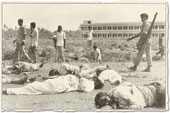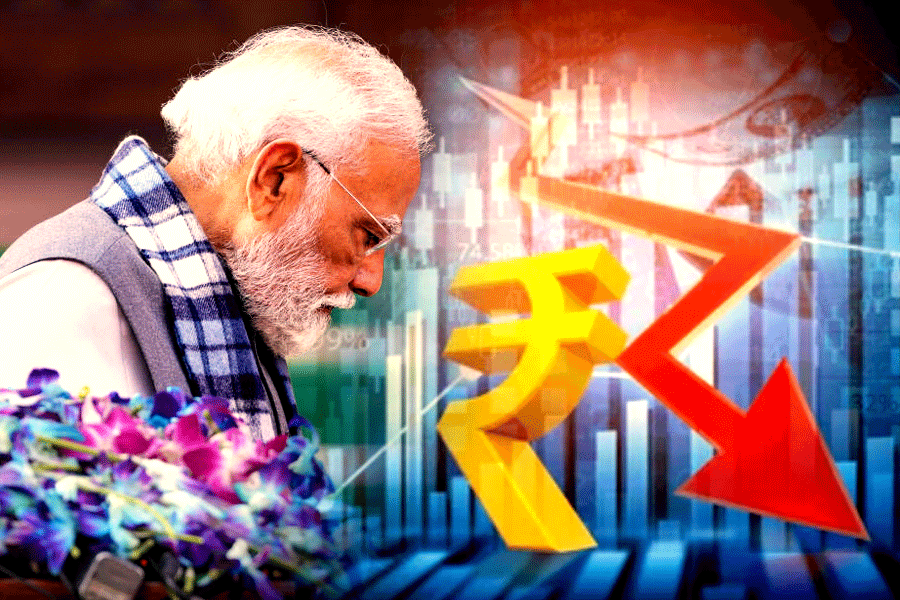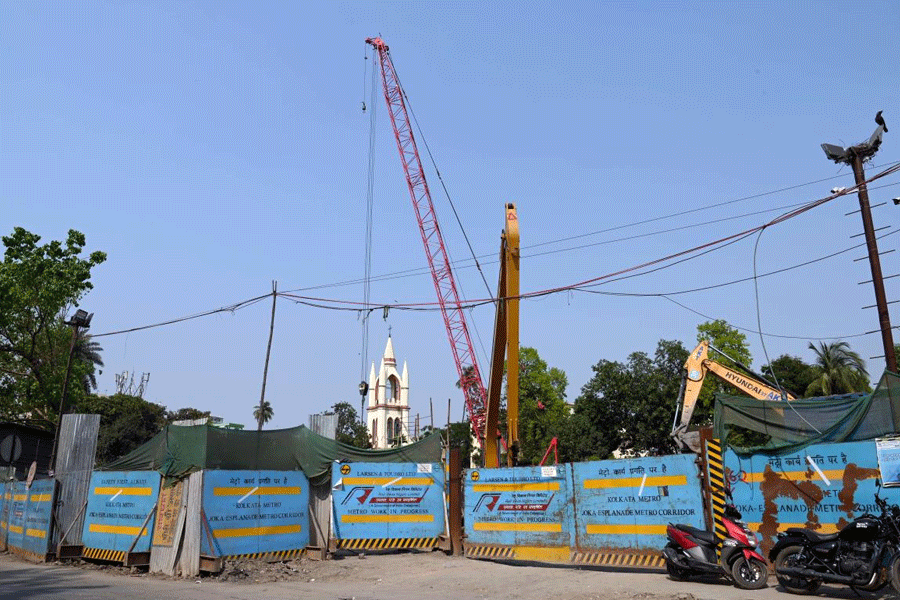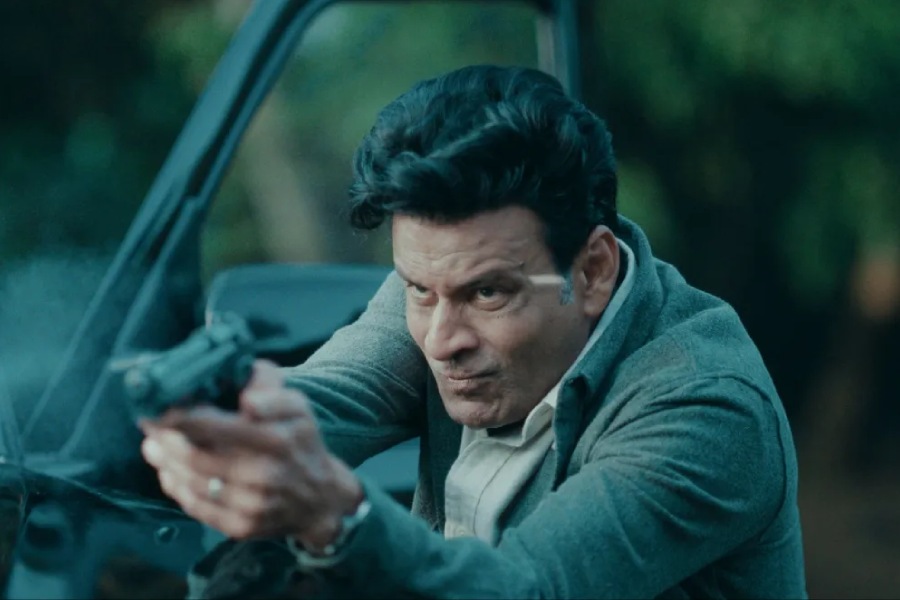 |
| BITTER TRUTH: Civilians massacred in Jessore in 1971 ? but by whom? |
 |
| RECOGNITION DENIED: Father and son killed in Dhaka in 1971 |
The bodies lie strewn on the ground. All are adult men, in civilian clothes. A uniformed man with a rifle slung on his back is seen on the right. A smattering of onlookers stand around, a few appear to be working, perhaps to remove the bodies.
The caption of the photo is just as grim as its content: ‘April 2, 1971: Genocide by the Pakistan Occupation Force at Jessore.’ It is in a book printed by Bangladeshis trying to commemorate the victims of their liberation war.
It is a familiar scene. There are many grisly photographs of dead bodies from 1971, published in books, newspapers and websites.
Reading another book on the 1971 war, there was that photograph again ? taken from a slightly different angle, but the bodies and the scene of the massacre were the same. But wait a minute! The caption here reads: ‘The bodies of businessmen murdered by rebels in Jessore city.’
The alternative caption is in The East Pakistan Tragedy, by L.F. Rushbrook Williams, written in 1971 before the independence of Bangladesh. Rushbrook Williams is strongly in favour of the Pakistan government and highly critical of the Awami League. However, he was a fellow of All Souls College, Oxford, had served in academia and government in India, and with the BBC and The Times. There was no reason to think he would willfully mislabel a photo of a massacre.
And so, in a bitter war where so many bodies had remained unclaimed, here is a set of murdered men whose bodies are claimed by both sides of the conflict! Who were these men? And who killed them?
It turns out that the massacre in Jessore may have been genocide, but it wasn’t committed by the Pakistan army. The dead men were non-Bengali residents of Jessore, butchered in broad daylight by Bengali nationalists.
It is but one incident, but illustrative of the emerging reality that the conflict in 1971 in East Pakistan was a lot messier than most have been led to believe. Pakistan’s military regime did try to crush the Bengali rebellion by force, and many Bengalis did die for the cause of Bangladesh’s independence. Yet, not every allegation hurled against the Pakistan army was true, while many crimes committed in the name of Bengali nationalism remain concealed.
Once one took a second look, some of the Jessore bodies are dressed in salwar kameez ? an indication that they were either West Pakistanis or ‘Biharis’, the non-Bengali East Pakistanis who had migrated from northern India.
As accounts from the involved parties ? Pakistan, Bangladesh and India ? tend to be highly partisan, it was best to search for foreign eye witnesses, if any. My search took me to newspaper archives from 35 years ago. The New York Times carried the photo on April 3, 1971, captioned: ‘East Pakistani civilians, said to have been slain by government soldiers, lie in Jessore square before burial.’ The Washington Post carried it too, right under its masthead: ‘The bodies of civilians who East Pakistani sources said were massacred by the Pakistani army lie in the streets of Jessore.’ “East Pakistani sources said”, and without further investigation, these august newspapers printed the photo.
In fact, if the Americans had read The Times of London of April 2 and Sunday Times of April 4 or talked to their British colleagues, they would have had a better idea of what was happening in Jessore. In a front-page lead article on April 2 entitled ‘Mass Slaughter of Punjabis in East Bengal,’ The Times war correspondent Nicholas Tomalin wrote an eye-witness account of how he and a team from the BBC programme Panorama saw Bengali troops and civilians march 11 Punjabi civilians to the market place in Jessore where they were then massacred. “Before we were forced to leave by threatening supporters of Shaikh Mujib,” wrote Tomalin, “we saw another 40 Punjabi “spies” being taken towards the killing ground?”
Tomalin followed up on April 4 in Sunday Times with a detailed description of the “mid-day murder” of Punjabis by Bengalis, along with two photos ? one of the Punjabi civilians with their hands bound at the Jessore headquarters of the East Pakistan Rifles (a Bengal formation which had mutinied and was fighting on the side of the rebels), and another of their dead bodies lying in the square. He wrote how the Bengali perpetrators tried to deceive them and threatened them, forcing them to leave. As other accounts also testify, the Bengali “irregulars” were the only ones in central Jessore that day, as the Pakistan government forces had retired to their cantonment.
Though the military action had started in Dhaka on March 25 night, most of East Pakistan was still out of the government’s control. Like many other places, “local followers of Sheikh Mujib were in control” in Jessore at that time. Many foreign media reported the killings and counter-killings unleashed by the bloody civil war, in which the army tried to crush the Bengali rebels and Bengali nationalists murdered non-Bengali civilians.
Tomalin records the local Bengalis’ claim that the government soldiers had been shooting earlier and he was shown other bodies of people allegedly killed by army firing. But the massacre of the Punjabi civilians by Bengalis was an event he witnessed himself. Tomalin was killed while covering the Yom Kippur war of 1973, but his eye-witness accounts solve the mystery of the bodies of Jessore.
There were, of course, genuine Bengali civilian victims of the Pakistan army during 1971. Chandhan Sur and his infant son were killed on March 26 along with a dozen other men in Shankharipara, a Hindu area in Dhaka. The surviving members of the Sur family and other residents of Shankharipara recounted to me the dreadful events of that day. Amar, the elder son of the dead man, gave me a photo of his father and brother’s bodies, which he said he had come upon at a Calcutta studio while a refugee in India. The photo shows a man’s body lying on his back, clad in a lungi, with the infant near his feet.
Amar Sur’s anguish about the death of his father and brother (he lost a sister in another shooting incident) at the hands of the Pakistan army is matched by his bitterness about their plight in independent Bangladesh. They may be the children of a ‘shaheed,’ but their home was declared ‘vested property’ by the Bangladesh government, he said, in spite of documents showing that it belonged to his father. Even the Awami League ? support for whom had cost this Hindu locality so many lives in 1971 ? did nothing to redress this when they formed the government.
In the book 1971: documents on crimes against humanity committed by Pakistan army and their agents in Bangladesh during 1971, published by the Liberation War Museum, Dhaka, I came across the same photo of the Sur father and son’s dead bodies. It is printed twice, one a close-up of the child only, with the caption: ‘Innocent women were raped and then killed along with their children by the barbarous Pakistan Army’. Foreigners might just have mistaken the ‘lungi’ worn by Sur for a ‘saree’, but surely Bangladeshis can tell a man in a ‘lungi’ when they see one! And why present the same ‘body’ twice?
The contradictory claims on the photos of the dead of 1971 reveal in part the difficulty of recording a messy war, but also illustrate vividly what happens when political motives corrupt the cause of justice and humanity. The political need to spin a neat story of Pakistani attackers and Bengali victims made the Bengali perpetrators of the massacre of Punjabi civilians in Jessore conceal their crime and blame the army. The New York Times and The Washington Post “bought” that story too. The media’s reputation is salvaged in this case by the even-handed eye-witness reports of Tomalin in The Times and Sunday Times.
As for the hapless Chandhan Sur and his infant son, the political temptation to smear the enemy to the maximum by accusing him of raping and killing women led to Bangladeshi nationalists denying their own martyrs their rightful recognition. In both cases, the true victims ?Punjabis and Bengalis, Hindus and Muslims ? were cast aside, their suffering hijacked, by political motivations of others that victimised them a second time around.










